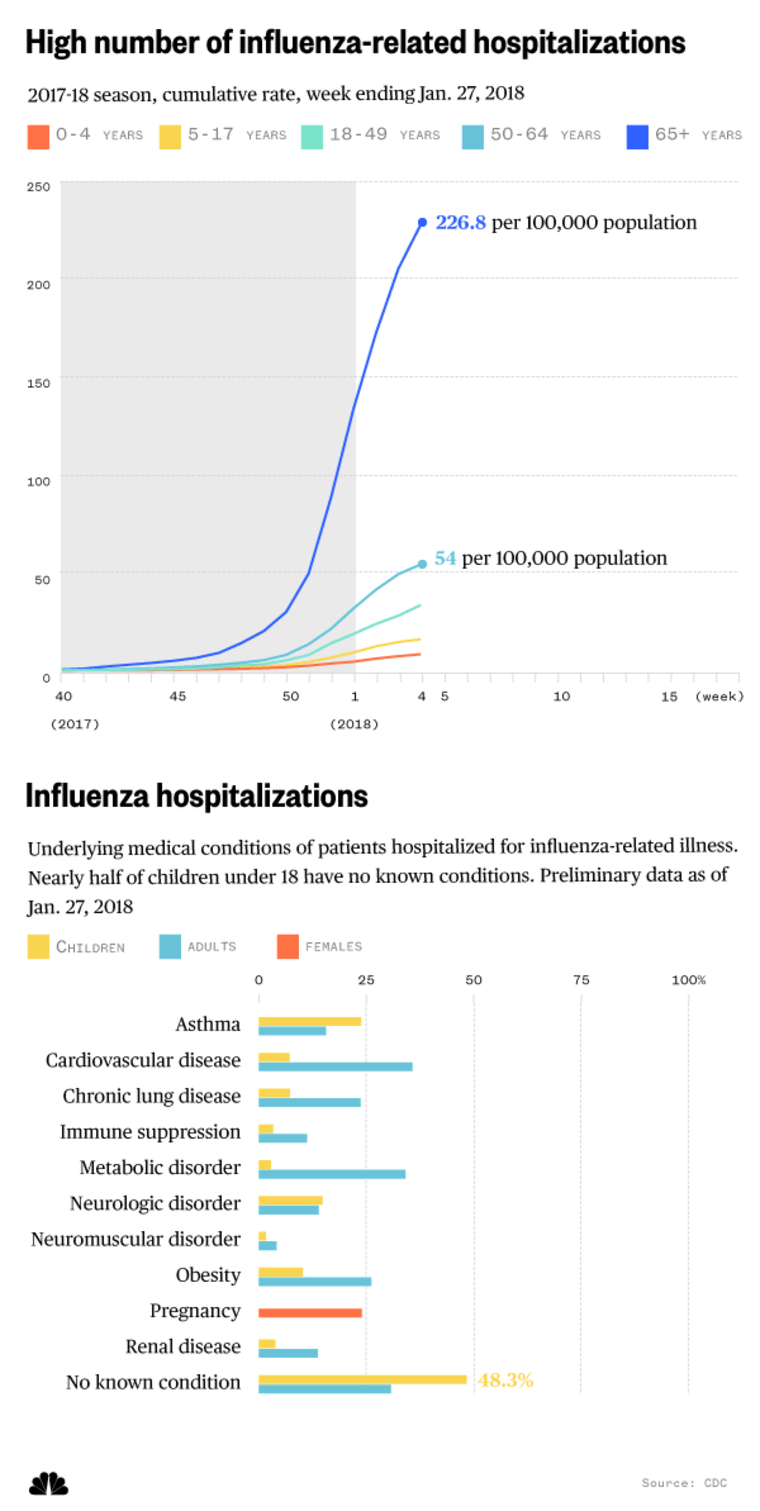The flu season is getting worse, with the highest number of hospitalizations seen in eight years, federal health officials said Friday.
Sixteen more children were reported to have died from influenza, bringing the total to 53 for the flu season, the Centers for Disease Control and Prevention reported.
“Latest tracking data indicates that flu activity is still high and widespread across most of the nation and increasing overall,” CDC acting director Dr. Anne Schuchat told reporters.
“We are also continuing to hear reports of crowded hospitals and continued shortages of anti-influenza medications.”
CDC officials have been describing this year’s flu season as a tough one — almost the entire United States has been hit with widespread flu activity at the same time.
“This is an unusual pattern for the U.S.,” the CDC’s Dr. Daniel Jernigan said.
Related: How to prevent flu? Wash your hands
“For the prior three weeks, we have had 49 states with widespread activity, which is something we haven’t seen since collecting this data.”
Oregon is seeing a little less activity, bringing the total to 48 states with widespread infection, down from 49 the prior week. CDC officials said they hoped that meant the epidemic may finally be waning, at least in the west.
Flu causes an epidemic every year. Flu kills between 12,000 to 56,000 Americans every year, depending on how rough the season is, and it puts 140,000 to 710,000 people into the hospital.
The last time flu put 710,000 people into the hospital was the 2014-2015 flu season. This season may be on track to have even more flu hospitalizations, although the full count won’t be in for weeks yet.
Related: Why this year's bad flu season is good for the flu vaccine
"The hospitalization rate is the highest that we have seen" since 2010, Schuchat said.
"What we are saying is that so far this year, the cumulative rate of hospitalizations is the highest since we’ve been tracking in this way, which goes back to 2010."
The CDC measures flu activity in several ways. The rate of deaths from influenza is not as high as it was in 2014-2015, Jernigan said. Deaths from pneumonia and influenza are at 9.7 percent of all deaths being reported.
Schuchat and Jernigan said weeks more remain in the flu season and it's not to late to get vaccinated.
"We continue to recommend the flu vaccine," Schuchat said. Flu vaccines on the market protect against three or four strains of influenza, and all four strains are circulating. The most common virus putting people into the hospital is the H3N2 strain and the vaccine is not terribly effective against that strain, but it works better against H1N1, which is also circulating, and the two influenza B strains Schuchat said.

There are spot shortages of antiviral medications to fight flu, such as Tamiflu, Schuchat said. "Patients may have to call more than one pharmacy to fill their prescriptions," she said.
And she said people should not worry too much about unusual side-effects. "The fears about very severe side-effects of antivirals have not held up under robust examination," Schuchat said.
Flu seasons can last for as long as 20 weeks, the CDC notes. The U.S. has had 10 weeks of elevated influenza-like-illness, so weeks more could remain.
Pregnant women, people with respiratory disease, the very old and the very young have the highest risk from flu, but the CDC said half of those who have been hospitalized have had no underlying conditions that would put them at high risk.
Half the children who have died from flu so far were perfectly healthy, the CDC said, and 20 percent of those who died had been vaccinated. Kids have died from all the circulating influenza strains.
Worried parents need to keep an eye out for signs of serious flu, which include trouble breathing very high fever, rapid breathing, and symptoms that appear to get better and then suddenly worsen again -- pointing to a potential secondary infection.
